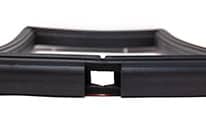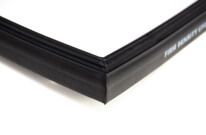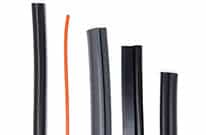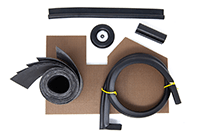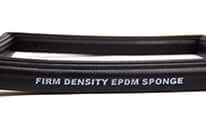The market for mobile equipment is expected to soar as market demand changes and older equipment is replaced. For manufacturers who want to maximize this opportunity, it’s important to design cabins that address three technology trends: electrification, lightweighting, and increasing electronic content. Elasto Proxy, provider of custom cabin components to leading manufacturers of mobile equipment, is monitoring these trends closely and offers the following observations.
Electrification
The electrification of mobile equipment has consequences inside the cabin. Without the low rumble of a diesel engine, sounds that an operator couldn’t hear before may seem magnified. Door seals that admit outside air can contribute to the creation of a whistling sound. Window glass that rattles can be distracting and annoying. As the automotive industry has learned, high levels of noise, vibration and harshness (NVH) or buzz, squeak and rattle (BSR) also contribute to perceptions of poor product quality.
Door seals and window seals that are water jet cut can seal out air, hold in window glass, and reduce NVH and BSR. Cabin insulation that consists of a sound absorbing foam laminated to a vibration damper can also reduce noise and increase comfort. Assembly and maintenance personnel can benefit, too. Headliners that come with a peel-and-stick adhesive are easy-to-install. Plus, they don’t require adhesive spraying – a process that can pose health and safety concerns and require time-consuming cleanups.
Lightweighting
Lightweighting, a design strategy that seeks to reduce weight to achieve greater fuel efficiency, is also affecting cabin components. Historically, the bodies of mobile equipment have been fabricated from sheet metal. As thermoformed panels replace these structures, engineers may need to redesign door and window seals or even choose different materials. Because carbon fiber has a different expansion rate than metals, old door seal designs may not fill the gap and old window seals may not prevent rattling.
Mobile equipment lightweighting is also transforming fastener selection. Metal screws, bolts and washers don’t weigh much individually, but consider how many of these fasteners are used in the cabin alone. Gasket holes that are water jet cut can accommodate lighter-weight plastic push pins and hold them securely. Where metal fasteners are required, water jet cutting can accommodate screw or bolt heads cleanly. Rubber seals that are water jet cut can also have notches, angles, chamfers and vent holes.
Increasing Electronic Content
The increasing electronic content inside mobile equipment cabins is also driving cabin innovations. Scales, lasers, reach limiters, and global positioning systems (GPS) all incorporate sensors and electronic displays. Through telematics, fleet managers can gather, store, analyze and report information about assets to ensure the most efficient use of resources. This electronic content supports operational efficiency but requires protection against electromagnetic interference (EMI) and vibration.
EMI or “cross talk” can create disturbances that result in temporary data losses, or system failures that put personnel and equipment at risk. To shield against EMI, cabins can incorporate enclosure gaskets made of silicones that are filled with metal or metal-coated particles. To protect electronic displays, anti-vibration mounts are used. They consist of a molded rubber component and a threaded fastener or metal flange. Rubber-to-metal bonding for reduced vibration is also used with bushings, washers and grommets.
The Road Ahead for Cabin Components
As the global market for mobile equipment continues to grow, buyers can expect cabins that support greater operator comfort and safety. Trends in mobile equipment electrification, lightweighting, and electronic content will also reduce fuel consumption, carbon emissions, and operational waste. Manufacturers who optimize their cabin designs for these technology trends can position themselves to increase sales as buyers enjoy these benefits.




